
Porto: The Enchanting Riverside Gem of Portugal
Explore Porto: Portugal's vibrant city along the Douro River, famous for its Port wine, historic architecture, and delectable cuisine.
Nestled along the Douro River, Porto is a city brimming with history, culture, and breathtaking views. Known for its famous Port wine, this charming city invites you to explore its narrow cobblestone streets, historic buildings, and vibrant neighborhoods. As you wander through the UNESCO World Heritage Ribeira district, you'll be greeted by colorful facades, traditional boats, and lively cafes. Discover the architectural marvels of Porto, from the imposing São Bento railway station adorned with stunning azulejos (ceramic tiles) to the Clerigos Tower offering panoramic views of the city. The Livraria Lello, one of the most beautiful bookstores in the world, is a must-visit for book lovers and architecture enthusiasts alike. Foodies will delight in Porto's culinary scene, which features a mix of traditional Portuguese dishes and modern cuisine. Don't miss trying the local specialty, Francesinha, a hearty sandwich layered with meat, cheese, and a rich tomato and beer sauce. Pair your meals with a glass of Port wine, which you can also sample at the historic wine cellars across the river in Vila Nova de Gaia.
Local tips in Porto
- Wear comfortable shoes for walking on Porto's hilly and cobblestone streets.
- Try visiting the Livraria Lello early in the morning to avoid long lines.
- Take a boat tour on the Douro River for unique views of the city and its iconic bridges.
- Sample a variety of Port wines at the cellars in Vila Nova de Gaia.
- Use the local tram system to explore different parts of the city efficiently.
Neighbourhoods in Porto
Porto: The Enchanting Riverside Gem of Portugal
Nestled along the Douro River, Porto is a city brimming with history, culture, and breathtaking views. Known for its famous Port wine, this charming city invites you to explore its narrow cobblestone streets, historic buildings, and vibrant neighborhoods. As you wander through the UNESCO World Heritage Ribeira district, you'll be greeted by colorful facades, traditional boats, and lively cafes. Discover the architectural marvels of Porto, from the imposing São Bento railway station adorned with stunning azulejos (ceramic tiles) to the Clerigos Tower offering panoramic views of the city. The Livraria Lello, one of the most beautiful bookstores in the world, is a must-visit for book lovers and architecture enthusiasts alike. Foodies will delight in Porto's culinary scene, which features a mix of traditional Portuguese dishes and modern cuisine. Don't miss trying the local specialty, Francesinha, a hearty sandwich layered with meat, cheese, and a rich tomato and beer sauce. Pair your meals with a glass of Port wine, which you can also sample at the historic wine cellars across the river in Vila Nova de Gaia.
When is the best time to go to Porto?
Iconic landmarks you can’t miss
Luís I Bridge
Explore the stunning Luís I Bridge in Porto, a breathtaking feat of engineering with panoramic views of the Douro River and the city's vibrant skyline.

Jardins do Palácio de Cristal
Explore the lush landscapes and stunning vistas of Jardins do Palácio de Cristal, a tranquil garden oasis in the heart of Porto.

Porto Cathedral
Explore the stunning Porto Cathedral, a masterpiece of Gothic architecture offering breathtaking views and rich cultural history in the heart of Porto.
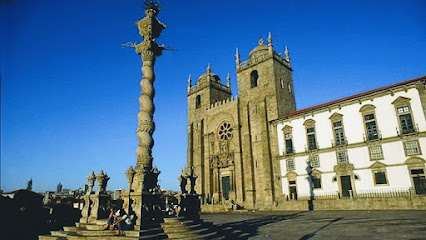
Mercado Bom Sucesso
Explore Mercado Bom Sucesso, Porto's lively market offering local delicacies, fresh produce, and a family-friendly atmosphere perfect for tourists.
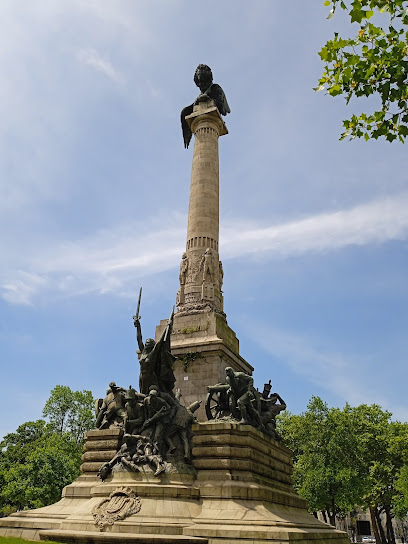
Parque da Cidade do Porto
Experience the lush landscapes and cultural vibrancy of Parque da Cidade do Porto, the largest urban park in Portugal, perfect for relaxation and exploration.

Casa da Música
Discover the architectural marvel of Casa da Música, Porto's premier concert hall, where music and culture come alive in a vibrant setting.

Torre dos Clérigos
Explore the breathtaking Torre dos Clérigos in Porto, a stunning Baroque tower offering panoramic views and rich history amidst charming streets.
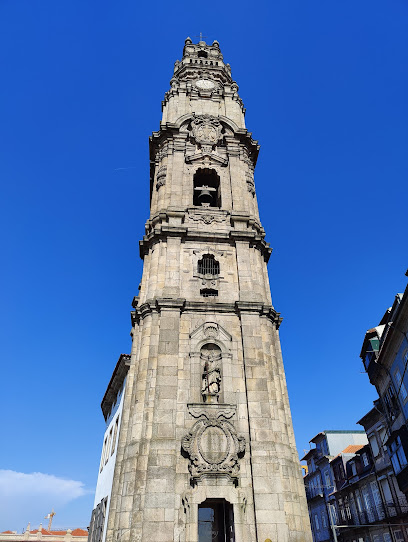
Jardim do Passeio Alegre
Explore the serene beauty of Jardim do Passeio Alegre, a charming community garden in Porto offering stunning views and a peaceful retreat for all.

Clerigos Church and Tower
Explore the stunning Clerigos Church and Tower in Porto, a masterpiece of Baroque architecture offering breathtaking views and rich cultural history.
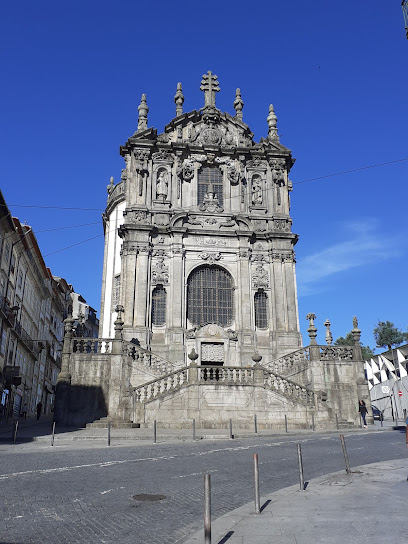
Bolsa Palace
Visit Bolsa Palace in Porto, a stunning historical landmark showcasing neoclassical architecture and a rich cultural heritage.

Chapel of Souls
Discover the stunning Chapel of Souls in Porto, a masterpiece of azulejos and a serene spiritual retreat for every traveler.

Church of Saint Francis
Explore the stunning Baroque and Gothic architecture of the Church of Saint Francis in Porto, a must-visit destination for art and history lovers.

Parque das Virtudes
Explore the lush beauty and serene vistas of Parque das Virtudes, a tranquil garden oasis in the heart of Porto, perfect for relaxation and scenic views.

Praça da Batalha
Discover the heart of Porto at Praça da Batalha, a historic landmark blending vibrant culture with stunning architecture.

Igreja do Carmo
Experience the breathtaking beauty and rich history of Igreja do Carmo, a stunning Catholic church adorned with iconic azulejos in Porto.

Unmissable attractions to see
Livraria Lello
Discover Livraria Lello, a stunning bookstore in Porto that combines architectural beauty with a rich literary heritage, perfect for every book lover's journey.

Jardins do Palácio de Cristal
Explore the stunning Jardins do Palácio de Cristal in Porto, a serene garden retreat featuring vibrant flora, scenic views, and cultural events.

Estádio do Dragão
Experience the electric atmosphere of Estádio do Dragão, home of FC Porto, and delve into the heart of Portuguese football culture in Porto.

Bom Jesus do Monte
Discover the spiritual beauty and stunning vistas of Bom Jesus do Monte, a remarkable sanctuary in Portugal that captivates every traveler.

Porto Cathedral
Discover the historical Porto Cathedral, a masterpiece of architecture and spirituality, offering breathtaking views and rich cultural heritage in the heart of Porto.

Guimarães Castle
Discover Guimarães Castle, Portugal's ancient fortress that embodies the rich history and architectural beauty of the nation, nestled in the heart of Guimarães.

Jardim do Morro
Experience the breathtaking beauty and panoramic views of Porto at Jardim do Morro, a serene garden in Vila Nova de Gaia, perfect for relaxation and photography.

Mercado Bom Sucesso
Experience the best of Porto's culinary scene at Mercado Bom Sucesso, a vibrant market offering diverse local and international food options.

Parque da Cidade do Porto
Experience the natural beauty and tranquility of Parque da Cidade do Porto, the largest urban park in Porto, perfect for relaxation and exploration.

Casa da Música
Discover the architectural marvel and vibrant music scene at Casa da Música in Porto, a must-visit destination for culture enthusiasts and tourists.

Torre dos Clérigos
Explore the breathtaking Torre dos Clérigos in Porto, Portugal—an iconic baroque bell tower with stunning views and rich cultural heritage.

Praia de Matosinhos
Experience the breathtaking beauty of Praia de Matosinhos, where golden sands meet vibrant culture and delicious seafood in stunning Portugal.

Passadiços do Paiva Trailhead (Areinho)
Explore breathtaking views along the stunning Passadiços do Paiva Trailhead, a premier hiking destination in Portugal's lush landscapes.

Clérigos Church
Discover the Clérigos Church, a Baroque masterpiece in Porto, offering stunning architecture and breathtaking views from its iconic tower.

She Changes
Experience the transformative beauty of 'She Changes,' a stunning sculpture in Matosinhos that reflects the dynamic interplay of art and nature.

Essential places to dine
Casa Guedes Tradicional
Discover Casa Guedes: Traditional Portuguese cuisine with a modern twist in the heart of Porto, famous for its delicious sandwiches and vibrant atmosphere.

Gazela
Experience the iconic Cachorrinho at Gazela in Porto - where delicious flavors meet local tradition in a vibrant setting.

Tapabento S.Bento
Experience authentic Portuguese tapas at Tapabento S.Bento in Porto - where every dish tells a story.

A Despensa
Discover authentic Italian flavors in Porto at A Despensa – where every dish tells a story.

Taberna Santo António
Discover the essence of traditional Portuguese cuisine at Taberna Santo António in Porto—where every meal tells a story.

Lareira - Baixa
Experience authentic Portuguese cuisine at Lareira - Baixa in Porto, where tradition meets flavor in every dish.

Cantinho do Avillez - Porto
Discover the exquisite flavors of Portugal at Cantinho do Avillez - where tradition meets innovation in every dish.

Pregar
Discover the essence of gourmet dining at Pregar in Porto – where exceptional burgers meet vibrant atmosphere.

Ribeira Square Restaurante
Experience authentic Portuguese cuisine with stunning views at Ribeira Square Restaurante in Porto's vibrant riverside.

Taberna Dos Mercadores
Experience authentic Portuguese cuisine at Taberna Dos Mercadores in Porto, where every dish tells a story of tradition and flavor.

Muu Steakhouse
Experience exceptional steak dining at Muu Steakhouse in Porto - where quality meets flavor in an inviting atmosphere.

Flow Restaurant & Bar
Discover Flow Restaurant & Bar: A fusion of traditional Portuguese flavors and modern dining experiences in the heart of Porto.

Cantina 32
Savor authentic Portuguese dishes at Cantina 32 in Porto - where tradition meets modern dining in a cozy atmosphere.

Bulha Sá da Bandeira
Savor the essence of Portugal at Bulha Sá da Bandeira - where traditional flavors meet modern dining in Porto.

Rua Tapas Restaurant & Music Bar
Experience the best of Portuguese cuisine with tapas and live music at Rua Tapas Restaurant & Music Bar in Porto.

Markets, malls and hidden boutiques
ViaCatarina Shopping
Discover the ultimate shopping experience at ViaCatarina Shopping Mall in Porto, where fashion meets local culture and culinary delights.

Alameda Shop & Spot
Discover Alameda Shop & Spot, Porto's vibrant shopping mall featuring a variety of stores, delightful dining options, and entertainment for all ages.

Shopping Cidade do Porto
Discover Shopping Cidade do Porto, where modern retail meets local culture in a vibrant shopping experience for all.

Shopping Brasília
Immerse yourself in the vibrant shopping experience at Shopping Brasília, Porto's premier shopping destination with diverse retail and dining options.

Mon Père Vintage
Explore the charm of vintage fashion at Mon Père Vintage, where unique clothing and accessories await in the heart of Porto.

Peninsula Boutique Center
Experience the vibrant shopping atmosphere of Peninsula Boutique Center in Porto, where local charm meets international brands.

Claus Porto
Explore the luxurious world of Claus Porto, where exquisite cosmetics, perfumes, and gifts await you in the heart of Porto.

Porto de Magia
Discover Porto de Magia, a charming gift shop and art supply store in Porto, Portugal, showcasing local art and unique handcrafted treasures.

Porto sao Bento Luggage storage (Souvenirs Baixa)
Experience Porto like a local at Porto São Bento Luggage Storage, where convenience meets an exquisite selection of local souvenirs and gifts.

The Feeting Room | Loios
Discover Porto's chic style at The Feeting Room | Loios, a boutique offering unique fashion, accessories, and a cozy café experience.

Mercado 48
Explore Mercado 48 in Porto for unique artisanal products that capture the spirit of Portuguese culture and craftsmanship.

Almada 13
Discover the charm of Almada 13, a unique store and cafeteria in Porto, offering local goods and a cozy atmosphere for every visitor.

Com Sotaque
Explore Com Sotaque in Porto for unique vintage clothing and accessories that tell a story and celebrate sustainable fashion.

Loja Tradições
Experience the heart of Porto at Loja Tradições, where unique souvenirs and local crafts await every traveler.

Prometeu Artesanato
Discover the essence of Porto at Prometeu Artesanato, your go-to spot for unique handcrafted souvenirs reflecting Portuguese culture.
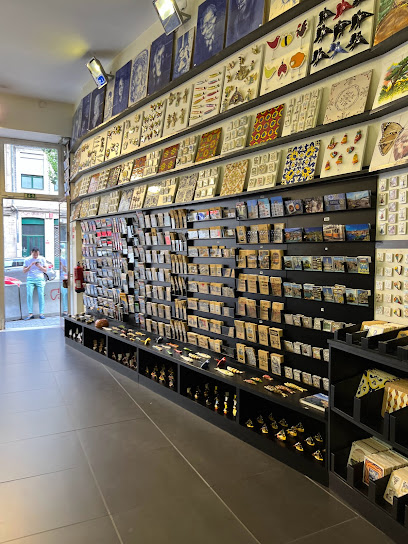
Essential bars & hidden hideouts
Base Porto
Experience the vibrant atmosphere of Base Porto, a must-visit bar offering delicious drinks, stunning views, and a lively ambiance in the heart of the city.

Aduela
Experience the vibrant nightlife of Porto at Aduela, a top bar known for its exquisite drinks and delightful tapas in a cozy atmosphere.
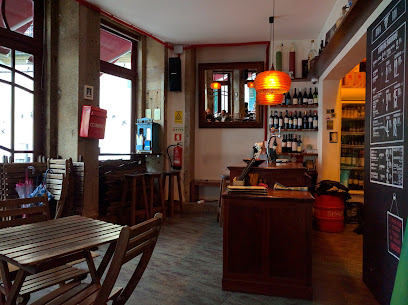
Bonaparte Downtown
Experience the vibrant atmosphere of Bonaparte Downtown in Porto - a perfect blend of pub culture and local cuisine.
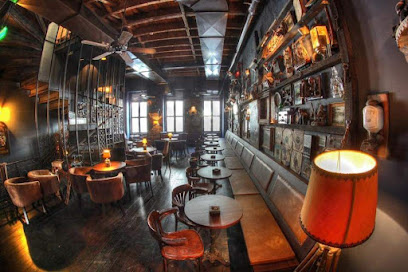
The Gin Club
Discover The Gin Club in Porto, a vibrant bar with over 300 gin varieties, offering a unique experience for gin lovers and cocktail enthusiasts alike.

Capela Incomum
Experience the charming Capela Incomum in Porto, where fine wines, artisanal cheeses, and delicious tapas await in a cozy atmosphere.

Terraplana Café
Experience Porto's vibrant nightlife at Terraplana Café, a cocktail bar and pizza haven offering unique flavors and a lively atmosphere.

THE ROYAL COCKTAIL CLUB
Discover the vibrant nightlife of Porto at The Royal Cocktail Club, where exquisite cocktails and a lively atmosphere await.

Ryan's Irish Pub
Ryan's Irish Pub: Enjoy authentic Irish dishes, craft beers, and live sports in the heart of Porto's vibrant atmosphere.
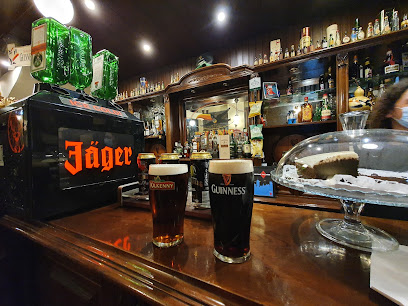
Bar Baixa
Experience Porto's nightlife at Bar Baixa, where vibrant atmosphere meets a diverse drink selection in the heart of the city.

Bar Labirintho
Experience the vibrant nightlife of Porto at Bar Labirintho, where expertly crafted cocktails and an enchanting atmosphere await.

Book House
Discover Porto’s unique Book House, where literature and nightlife converge for an unforgettable bar experience.

Torto - Bar & Cocktails
Discover the best cocktails and lively atmosphere at Torto - Bar & Cocktails, a vibrant hotspot in Porto's nightlife scene.

The Wall Bar
Experience the vibrant nightlife of Porto at The Wall Bar, a stylish destination for cocktails, music, and unforgettable memories.

Bar Conceição 35
Discover the vibrant atmosphere and culinary delights at Bar Conceição 35, a premier gastropub in Porto, Portugal.

Curioso Cocktail Bar
Experience the Best Cocktails and Gastropub Delights at Porto's Curioso Cocktail Bar, Where Flavor Meets Fun in a Stylish Setting.

Travel experiences inspired by this city
Explore more travel diariesLocal Phrases
-
- HelloOlá
[oh-lah] - GoodbyeAdeus
[ah-deh-oosh] - YesSim
[seem] - NoNão
[now] - Please/You're welcomePor favor/De nada
[por fah-vohr/deh nah-dah] - Thank youObrigado/a
[oh-bree-gah-doo/ah] - Excuse me/SorryCom licença/Desculpe
[kohm lee-sen-sah/deh-skool-peh] - How are you?Como estás?
[koh-moh ehs-tahsh] - Fine. And you?Bem. E tu?
[behm/eh too] - Do you speak English?Falas inglês?
[fah-lahsh een-glehsh] - I don't understandNão entendo
[now ehn-tehn-doo]
- HelloOlá
-
- I'd like to see the menu, pleaseGostaria de ver a ementa, por favor
[goh-stah-ree-ah deh vehr ah ehmehntah/por fah-vohr] - I don't eat meatNão como carne
[now koh-moh kahr-neh] - Cheers!Saúde!
[sow-deh] - I would like to pay, pleaseGostaria de pagar, por favor
[goh-stah-ree-ah deh pah-gahr/por fah-vohr]
- I'd like to see the menu, pleaseGostaria de ver a ementa, por favor
-
- Help!Ajuda!
[ah-joo-dah] - Go away!Vai embora!
[vah-ee ehm-boh-rah] - Call the Police!Chama a Polícia!
[shah-mah ah poh-lee-see-ah] - Call a doctor!Chama um médico!
[shah-mah oom meh-dee-koo] - I'm lostEstou perdido/a
[eh-stoh pehr-dee-doo/ah] - I'm illEstou doente
[eh-stoh doo-ehn-teh]
- Help!Ajuda!
-
- I'd like to buy...Gostaria de comprar...
[goh-stah-ree-ah deh kohm-prahr] - I'm just lookingEstou só a ver
[eh-stoh soh ah vehr] - How much is it?Quanto custa?
[kwahn-too koos-tah] - That's too expensiveIsso é demasiado caro
[ees-soh eh deh-mah-see-ah-doo kah-roo] - Can you lower the price?Pode baixar o preço?
[poh-deh bahy-shahr ooh preh-soo]
- I'd like to buy...Gostaria de comprar...
-
- What time is it?Que horas são?
[keh oh-rahsh sow] - It's one o'clockÉ uma hora
[eh oo-mah oh-rah] - Half past (10)Meia hora (dez)
[may-ah oh-rah (dehz)] - MorningManhã
[mah-nyah] - AfternoonTarde
[tahr-deh] - EveningNoite
[noy-tay] - YesterdayOntem
[ohn-tehm] - TodayHoje
[oh-zhay] - TomorrowAmanhã
[ah-mah-nyah] - 1Um
[oom] - 2Dois
[doysh] - 3Três
[trehsh] - 4Quatro
[kwah-troh] - 5Cinco
[seen-koh] - 6Seis
[saysh] - 7Sete
[seh-teh] - 8Oito
[oy-toh] - 9Nove
[noh-veh] - 10Dez
[dehz]
- What time is it?Que horas são?
-
- Where's a/the...?Onde fica o/a...?
[ohn-deh fee-kah ooh/ah] - What's the address?Qual é a morada?
[kwahl eh ah moh-rah-dah] - Can you show me (on the map)?Podes mostrar-me (no mapa)?
[poh-dehsh mohs-trahr-meh (noo mah-pah)] - When's the next (bus)?Quando é o próximo (autocarro)?
[kwahn-doo eh ooh proh-ksee-moh (ow-toh-kah-roo)] - A ticket (to ....)Um bilhete (para ...)
[oom beel-yeh-teh (pah-rah)]
- Where's a/the...?Onde fica o/a...?
History of Porto
-
Porto, originally known as Portus Cale, was founded by the Romans in the 4th century. The city's strategic location at the mouth of the Douro River made it an important trading post and settlement. Archaeological findings suggest that even before the Roman occupation, the area was inhabited by Celtic tribes.
-
During the Middle Ages, Porto thrived as a maritime trading hub. In the 12th century, the city played a pivotal role in the Reconquista, the Christian reconquest of the Iberian Peninsula from the Moors. Porto's cathedral, Sé do Porto, was constructed during this period and remains a significant historical landmark.
-
In the 15th and 16th centuries, Porto was instrumental in Portugal's Age of Discoveries. Prince Henry the Navigator, a central figure in this era, was born in Porto. The city’s shipyards built many of the vessels that would explore and map new territories, leading to Portugal’s global maritime dominance.
-
The 17th century marked the beginning of Porto's association with port wine. British merchants established trade routes and began exporting this fortified wine to England, creating a lasting legacy. The wine cellars in Vila Nova de Gaia, just across the Douro River, became the heart of this thriving industry.
-
In the 19th century, Porto was a center of liberal thought and action during the Portuguese Liberal Wars. The city was besieged for over a year from 1832 to 1833 in the Siege of Porto, a defining moment in Portugal's struggle between liberalists and absolutists. The resilience of Porto’s inhabitants during this period earned it the nickname 'Cidade Invicta' or 'Unvanquished City.'
-
The late 19th and early 20th centuries saw Porto emerge as an industrial powerhouse. Textile and manufacturing industries flourished, and the city expanded rapidly. Key infrastructure, such as the Dom Luís I Bridge designed by a disciple of Gustave Eiffel, was constructed, symbolizing the city's modernization.
-
In recent decades, Porto has transformed into a vibrant cultural hub. The city was named a UNESCO World Heritage Site in 1996, celebrating its rich architectural and historical significance. The opening of the Casa da Música in 2005 and the continuous growth of its arts scene further solidify Porto’s status as a center of contemporary culture.
Porto Essentials
-
Porto is well-connected by air, rail, and road. The primary gateway is Francisco Sá Carneiro Airport (OPO), located about 11 kilometers north of the city center. The airport offers international flights from major cities worldwide. From the airport, you can take the metro (Line E) directly to the city center in about 30 minutes. Alternatively, taxis and shuttle services are available. Porto is also accessible by train, with regular services from Lisbon and other major Portuguese cities arriving at São Bento and Campanhã stations. If you prefer driving, the A1 motorway connects Porto to Lisbon.
-
Porto has an efficient public transportation system that includes metro, buses, trams, and funiculars. The Andante card is a rechargeable travel card that can be used across all forms of public transport. The metro system is extensive and connects key areas, while buses serve routes that the metro does not cover. Trams offer a scenic way to explore the city, particularly Line 1 along the riverfront. Taxis and ride-sharing services like Uber are widely available. Porto is also very walkable, especially within the historic center.
-
The currency in Portugal is the Euro (EUR). Credit and debit cards are widely accepted in most hotels, restaurants, and shops. However, it is advisable to carry some cash for small purchases, especially in local markets and smaller establishments. ATMs are plentiful throughout the city, including in the city center and major tourist areas. It's also a good idea to inform your bank of your travel plans to avoid any issues with card transactions.
-
Porto is generally a safe city for tourists, but it's always wise to take standard precautions. Avoid displaying expensive items and keep your belongings secure, especially in crowded places like São Bento Station, Ribeira, and tourist hotspots. Some areas, such as the surroundings of Campanhã Station, may have higher crime rates, particularly at night. Use well-lit and populated streets and avoid walking alone late at night. Emergency services can be reached by dialing 112.
-
In case of emergency, dial 112 for immediate assistance for police, fire, or medical emergencies. Porto has several hospitals and clinics, including Hospital de São João and Hospital Santo António, which provide emergency medical services. Pharmacies are also widely available and can assist with minor health issues. It is advisable to have travel insurance that covers medical emergencies and to carry a copy of your insurance details.
-
Fashion: Do wear comfortable walking shoes, as Porto's streets are often cobblestoned and hilly. Dress smart-casual when dining out. Avoid overly revealing clothing. Religion: Do respect religious customs, especially when visiting churches. Dress modestly and remain quiet. Public Transport: Do give up your seat for elderly passengers and avoid talking loudly. Don't eat or drink on public transport. Greetings: Do greet people with a handshake or a kiss on both cheeks if you are familiar with them. Eating & Drinking: Do try local dishes like Francesinha and Port wine. Don't rush meals; dining is a leisurely activity.
-
To experience Porto like a local, visit Mercado do Bolhão, a traditional market where you can buy fresh produce and local delicacies. Explore lesser-known neighborhoods like Miragaia and Foz do Douro for a more authentic feel. Take a stroll along the Douro River and enjoy a coffee at a local café. Attend a Fado performance to experience traditional Portuguese music. Engage with locals, as they are usually friendly and eager to share stories about their city.
Trending Landmark in Porto
Nearby Cities to Porto
-
Things To Do in Guimarães
-
Things To Do in Braga
-
Things To Do in Aveiro
-
Things To Do in Viana do Castelo
-
Things To Do in Ponte de Lima
-
Things To Do in Lamego
-
Things To Do in Vila Real
-
Things To Do in Coimbra
-
Things To Do in Chaves
-
Things To Do in Bragança
-
Things To Do in Tomar
-
Things To Do in Santiago de Compostela
-
Things To Do in Viseu
-
Things To Do in Caldas da Rainha
-
Things To Do in Salamanca





























